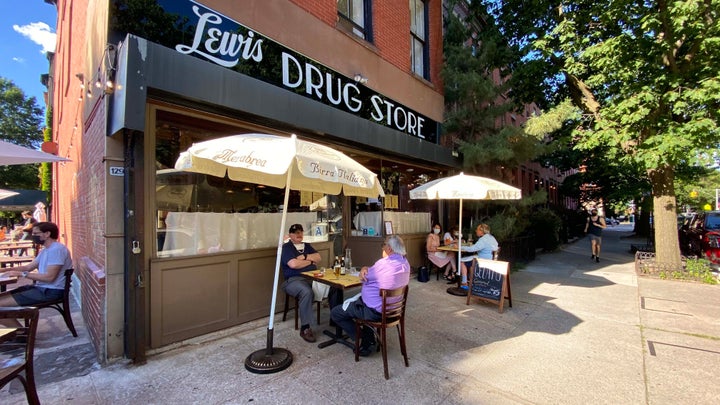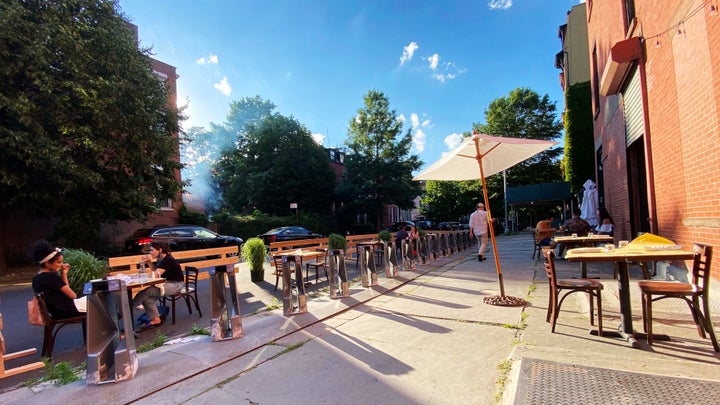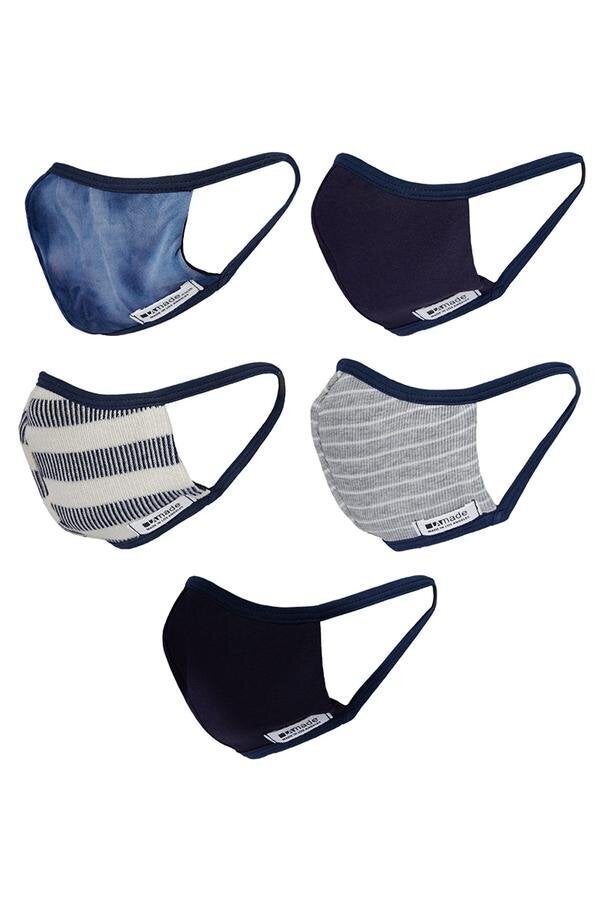
BROOKLYN, N.Y. — When the governor of New York said we could eat at restaurants again, we weren’t sure if we were ready. There are risks involved; a pandemic in a city of 8 million people makes any move outside the home a risky one.
Just a few months ago, the death toll made Brooklyn the deadliest county in the United States for COVID-19. We stopped going to the office, stopped going to restaurants, stopped seeing our friends, stopped going outside. For days on end, we’d hear ambulance sirens — a loud, droning reminder that the virus was quietly killing our friends and neighbors.
It felt like we’d lost New York overnight. The virus deprived us of being around other people, at bars and parks and dinner parties. But we were OK with the restrictions, because we knew and appreciated the implications of ignoring them. Going outside meant gambling with our safety and the safety of our neighbors. Initially, the virus throttled the city in such a way that made it feel irresponsible to go outside at all, even if you were lucky enough to own a mask, a box of gloves and jug of hand sanitizer.
Now the lockdown is beginning to lift. The death toll and infection rate are in decline, so the state government is easing restrictions in phases. Last week, Gov. Andrew Cuomo (D) announced the second phase of reopening, which meant we were allowed to dine at a restaurant if the place had outdoor seating and could put at least 6 feet between each table. I was elated. I hadn’t been outside the apartment much over the past four months, and I certainly hadn’t taken my girlfriend on a proper date in that time — unless you count drinking a bottle of wine in an uninhabited corner of the local dog park a proper date.
We really wanted to go out, and we knew our favorite places badly needed the support, but we were anxious about going to a restaurant during a pandemic. There were certain outdoor activities that we’d already justified for ourselves, either out of a sense of duty or because we’d mitigated the risk: We’d started taking socially distanced walks with friends in the park, covered in protective equipment, and we’d dipped into crowds of protesters marching through the city in ongoing national demonstrations against racism and oppression. Those were easy to rationalize.
Scarfing down a plate of pasta at our favorite Italian joint was not something we particularly needed or felt morally inclined to do.
“The most dangerous thing you can do right now is to be in an enclosed space with a bunch of other people, and that is what a restaurant is.”
- Michael Schall, co-owner of Locanda Vini e Olii
It’s still really bad out there: More than 25,000 people have died in New York state thus far, and social activities like having a drink at a crowded indoor bar are demonstrably harmful. And given that some states are seeing catastrophic spikes in infections and deaths as their economies reopen, we didn’t feel safe going out just because the governor said we could.
But we also wanted a taste of how life was before the virus changed it forever. We wanted to be around people again. We were lucky enough to have our jobs and our paychecks despite devastating cuts to this industry and others, and we wanted to splurge for a night. And maybe most of all, we wanted an Aperol spritz (or three) and a plate of sausage ragu from Locanda Vini e Olii, one of our favorite date spots in Brooklyn.
But if we were going to do it, we were going to do it safely. And as it turns out, restaurant staff were going through the same ethical and emotional panic we were.
“This is all new to us, too,” Locanda co-owner Michael Schall told me over the phone. “Locanda has been around almost 20 years and up until a few months ago, it was a machine. Everything was coordinated, from the placement of the glassware to the flow of the dining room. All of that went out the window. We changed everything to prioritize safety.”
We felt those changes the moment we sat down: We were served on small outdoor tables, each at least 6 feet away from the next. We never had to step foot indoors, where the risk of infection and spread would be much higher. Waitstaff wore masks and gave us hand sanitizer. The menu pointed us to a website that could answer any dietary questions we had, in order to minimize our face-to-face time with staff.
“It’s kind of a weird feeling, trying to show people hospitality but also trying to limit the time that staff is interacting with them,” Schall said. “But we want everyone, including our staff, to feel like we’re going above and beyond the guidelines set for us. People are nervous, and rightly so.”

We felt as safe sitting at a dining table outside as we did sitting in the park, but we were also faced with new questions of etiquette. Should we put on our masks every time we talk to our waiter? Would posting a photo get anyone in trouble? Would it get us canceled? This kind of anxiety pervades most of city life now (although if we’ve learned anything over the last few months, it’s that the anxiety lessens somewhere between a martini and a spritz).
Giving a few fidgety diners a good experience is just one piece of a challenging puzzle for restaurateurs like Schall.
He said he’s worried about two big problems: One is the weather getting too cold for outdoor dining and restaurants being forced to once again rely on selling to-go food and cocktails. (To-go cocktails were a lifeline during lockdown, but not a sustainable business plan, Schall said.) The other is a reopening phase — which could start as early as next week — that would allow restaurants to host limited indoor dining again.
Schall said he thinks it might be too soon for restaurants in New York City to open their dining rooms; states like Texas are limiting indoor dining after seeing huge increases in infections that are linked to crammed, fully open businesses.
“Just because we’re allowed to do something doesn’t mean that we should immediately do it,” he said. “Right now tables are at minimum 6 feet apart, it’s in open air. ... This is about as safe as it gets. But eating inside? The most dangerous thing you can do right now is to be in an enclosed space with a bunch of other people, and that is what a restaurant is.”
It’s an awkward feeling, trying to justify dining out while the specter of death looms. Everything we do now involves some amount of calculated risk, starting with the questions we ask ourselves before we walk out the door: What is my potential impact on the people around me? How do I minimize that impact? Is this endeavor worth the risk?
Just weeks ago, the answer to that last question was “no” more often than not. But now that we know our favorite spot is fretting over the same risks we are — and making the same plate of pasta we had before the pandemic — we’re getting more comfortable with saying “yes.”
